Part1 - 找相关资料
首先可以看到这个时候相关的资料极少!!!极少
首先读者需要掌握方的TileMap,然后掌握RuleTile并且完全跑通之后再继续阅读,这是本文的前置基础内容,不再介绍。
截至2023年7月11日,笔者唯一找到的资料就是这几个,而且其中三个是英文文档,一个更是说的几乎不相关。(也许有别的,但是不好找)
”Unity文档 “
Unity-Github仓库
“Coder”
“StackOverFlow”
Part 2 自己尝试
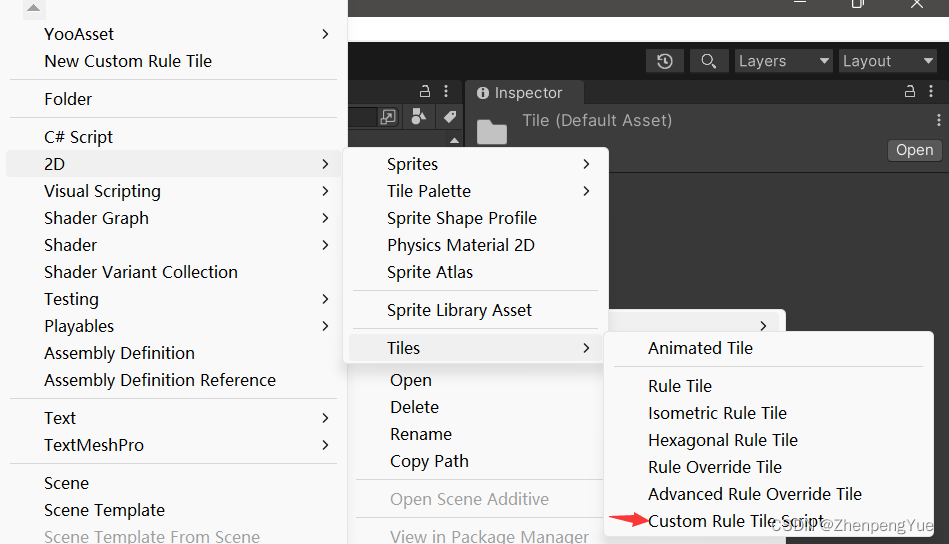
在成功创建了一个自定义的Tile匹配脚本之后
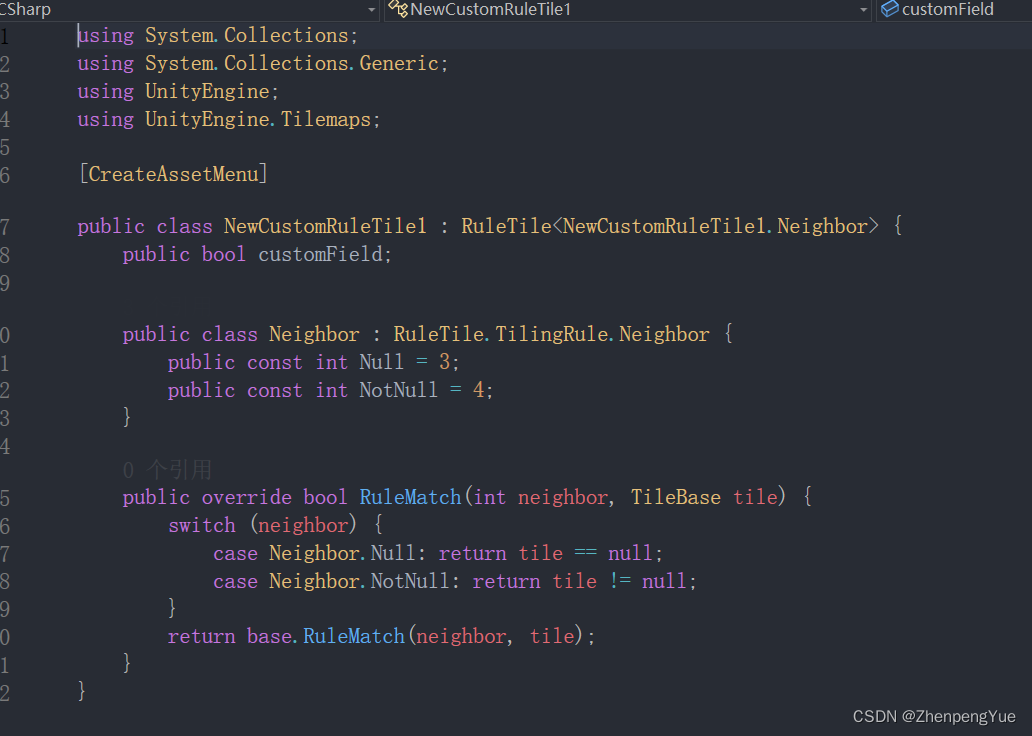
笔者还是蛮无语的.只有空和不空的选项,然后一头雾水,这个neightbor是什么???传入的参数又是什么??基类方法又是什么??这个customField是???Null和NotNull是哪里的??
带着疑问…
索性看见上面的CreateAssetMenu特性,直接创建一个试试
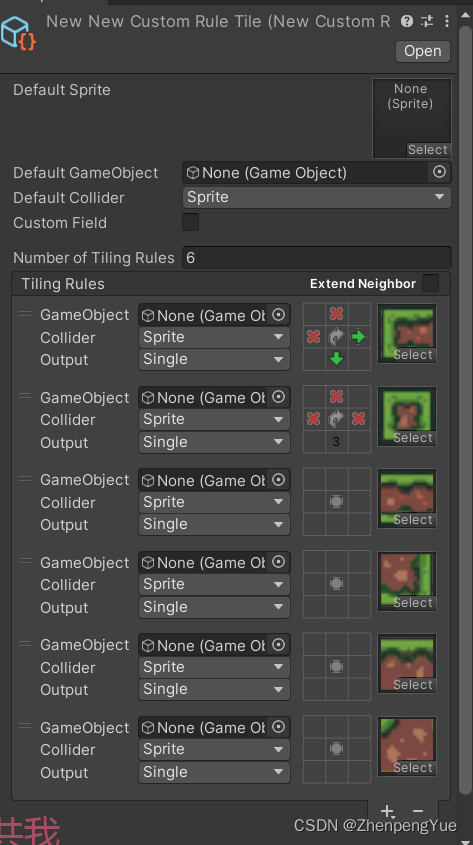
点来点去发现不再是绿色箭头和X了,出现了一个小数字
笔者突然悟了:
这个新脚本定义的Null和NotNull居然是这里的匹配选项
所以才会是3和4,仔细试了一下还真是这样


那就简单了
Part3 猜想推断
我只需要修改RuleMatch方法,这个方法返回True就是匹配成功了,
如果返回false就是失败了
我们只需要根据这个const Null = 3这些字段选项,去选择不同匹配规则即可
官方文档里说0 -1是内置的两个符号,我们需要注意

然后基类的RuleMatch显然就是匹配这个对号和叉号,空。这三种模式的返回逻辑。根据自己需要随便整。
Part4 验证我的瞎想
对号:匹配跟自己相同类型的方块
叉号:不存在跟自己一个类型的方块
留空:不管是什么(包括空)都匹配
我写的9:任意非空方块
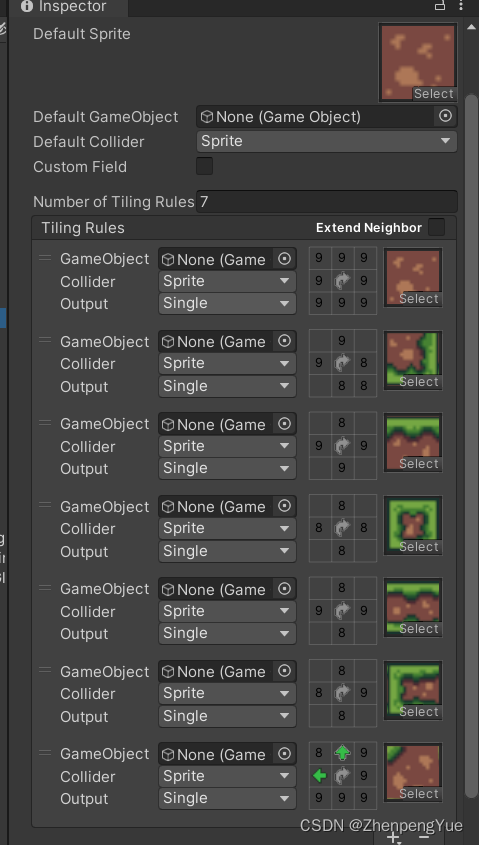
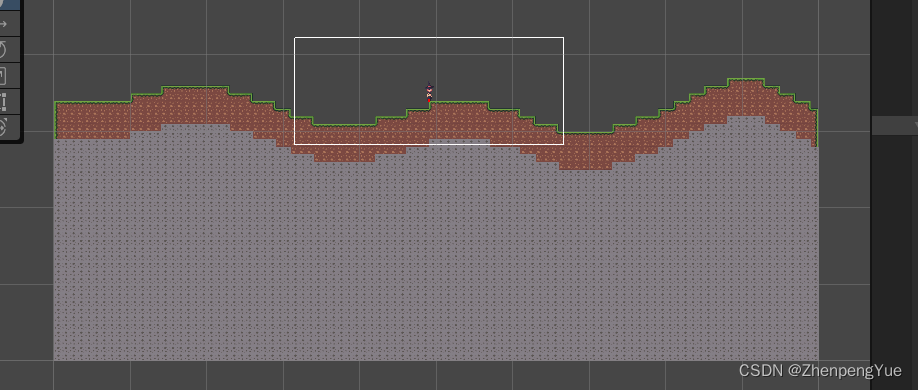
发现能够正确匹配了。任何格子只要不是空就可以匹配
using System.Collections;
using System.Collections.Generic;
using UnityEngine;
using UnityEngine.Tilemaps;
[CreateAssetMenu]
public class MapRuleTile : RuleTile<MapRuleTile.Neighbor> {
public bool customField;
public class Neighbor : RuleTile.TilingRule.Neighbor {
//任意方块,不论是不是跟自己类型相同
public const int AnyCell = 9;
//空,绝对的空,而不是只判断跟自己同类的
public const int NullCell = 8;
}
public override bool RuleMatch(int neighbor, TileBase tile)
{
//Debug.Log(tile?.name);
if(neighbor==Neighbor.NullCell)
{
return tile == null;
}
if(neighbor==Neighbor.AnyCell)
{
// 将相邻瓷砖视为与当前瓷砖相同,进行匹配
return tile != null;
}
// 其他的匹配逻辑...
return base.RuleMatch(neighbor, tile); // 使用规则磁贴的默认匹配逻辑
}
}
眼熟不
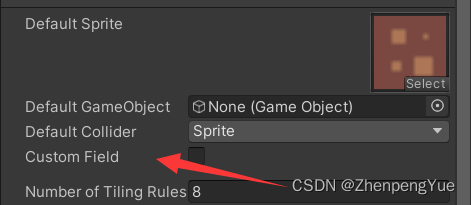
//下面转载自StackOverFlow,文首有链接,主要展示了如何应用
using System;
using UnityEngine;
using UnityEngine.Tilemaps;
[Serializable]
[CreateAssetMenu(fileName = "CoastHexagonTile", menuName = "Tiles/CoastHexagonTile")]
public class CoastHexagonTile : HexagonalRuleTile<CoastHexagonTile.Neighbor>
{
public bool isOcean;
public bool isCoast;
public class Neighbor : TilingRule.Neighbor
{
public const int IsOcean = 3;
public const int IsNotOcean = 4;
public const int IsCoast = 5;
public const int IsNotCoast = 6;
}
public override bool RuleMatch(int neighbor, TileBase tile)
{
var other = tile as CoastHexagonTile;
switch (neighbor)
{
case Neighbor.IsOcean:
return other && other.isOcean;
case Neighbor.IsNotOcean:
return other && !other.isOcean;
case Neighbor.IsCoast:
return other && other.isCoast;
case Neighbor.IsNotCoast:
return other && !other.isCoast;
}
return base.RuleMatch(neighbor, tile);
}
}





【推荐】国内首个AI IDE,深度理解中文开发场景,立即下载体验Trae
【推荐】编程新体验,更懂你的AI,立即体验豆包MarsCode编程助手
【推荐】抖音旗下AI助手豆包,你的智能百科全书,全免费不限次数
【推荐】轻量又高性能的 SSH 工具 IShell:AI 加持,快人一步
· 被坑几百块钱后,我竟然真的恢复了删除的微信聊天记录!
· 没有Manus邀请码?试试免邀请码的MGX或者开源的OpenManus吧
· 【自荐】一款简洁、开源的在线白板工具 Drawnix
· 园子的第一款AI主题卫衣上架——"HELLO! HOW CAN I ASSIST YOU TODAY
· Docker 太简单,K8s 太复杂?w7panel 让容器管理更轻松!